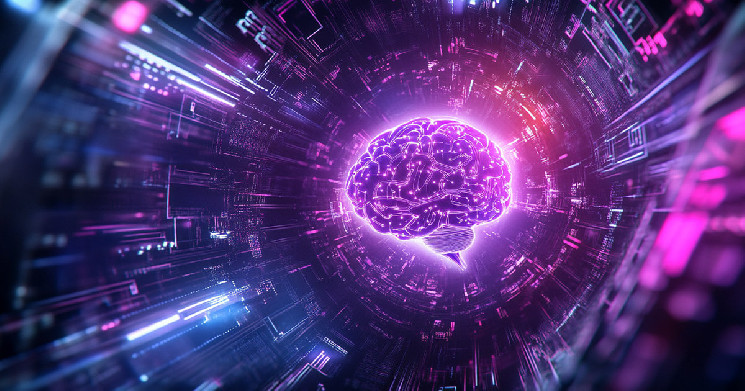DeFi will undergo a new wave of innovation in 2025, and one of the most exciting trends right now is the merger of DeFi and AI, also known as DeFAI. This combination of cutting-edge technology has the potential to change the way we think about finance, providing greater accessibility, streamlined automation, and more personalized tools for crypto users everywhere. But do the current DeFAI projects still live up to the hype?
What is DeFAI?
In short, DeFAI combines the decentralized financial ecosystem of DeFi with AI-driven analytics and automation. The market for these solutions could skyrocket from approximately $1 billion to $10 billion by the end of 2025. Leading projects such as Griffain, Orbit and Aixbt are already paving the way by combining AI-driven features with decentralized protocols, aiming to make everything from trading to lending more efficient and user-friendly.
These DeFAI projects are also attracting continued attention from traders, with tokens like AIXBT, GRIFFAIN, Hey Anon (ANON), Autonolas (OLAS) and ORBIT’s GRIFT showing significant weekly growth.
Of these top 5 tokens, AIXBT is up more than 50% in the last seven days, with a market cap of over $579 million and a daily volume of almost $464 million. GRIFFAIN gained 1.53% in seven days, supported by a market cap of over $422 million and 24-hour volume of over $69 million. ANON rose almost 100% in a week, reflecting a market cap of $246 million. OLAS grew by approximately 3% over the same period, with a market capitalization of over $114 million and daily volume of approximately $660,000. GRIFT soared more than 80% in seven days, pushing its market cap past $112 million, on top of 24-hour volume of nearly $28 million.
One of AI’s greatest strengths is its ability to sift through vast amounts of data and generate real-time insights. On-chain data (activity that occurs directly on the blockchain) and off-chain data (information from external sources) can be combined to help users make faster, more accurate decisions.
For example, Griffain uses natural language processing to let users interact with DeFi through simple, human-like commands. This means you don’t need a computer science degree to navigate DeFi.
A recent report from Binance Research highlights that these AI improvements could lead to smarter governance, better market analysis, and personalized financial strategies. By automating wallets and customizing risk assessments across multiple chains, DeFAI could open up DeFi tools to an even wider audience, reducing some of the complexity that has traditionally held back newcomers.
Despite all the promises, the introduction of AI in DeFi is not without hurdles. Transparency is a big problem: how do we know that the algorithms that make trading or credit decisions are reliable? And while the decentralized nature of DeFi can increase security, its combination with AI tools can create new vulnerabilities if not implemented carefully.
Regulators are only just starting to pay more attention to AI-driven financing. As AI becomes more autonomous, the question of who (or what) is responsible when something goes wrong becomes much more complicated.
The Crypto + AI story is growing.
The blockchain + AI story is arguably even more prominent elsewhere in crypto amid infrastructure projects, creating the tools that will become increasingly important as AI agents improve.
While Injective does not focus exclusively on DeFAI, it supports AI-driven risk models that align with the overall market shift towards AI-integrated solutions. Ocean Protocol, part of the ASI token ecosystem, focuses on decentralized data sharing and AI model training, bridging the gap between data availability and actionable insights.
Projects including ai16z, Virtuals, Bittensor, and SaharaAI are building codebases and infrastructure designed to streamline operations for AI-enhanced protocols. They focus on tasks such as automated rebalancing and data analysis in the chain. Developers emphasize the importance of security and transparent governance to maintain user trust, especially when smart contracts handle the allocation of funds based on algorithmic output.
These projects show how DeFAI can move beyond trading through other AI and blockchain integrations, into risk modeling, data analytics and more, allowing more people to tap into the decentralized economy.
Are AI agents currently memecoins in disguise?
DeFAI is still in its infancy and focuses a lot on momentum trading, similar to memecoins, leaving plenty of room for rapid evolution. Many AI agent tokens masquerading as part of the DeFAI revolution are just using the AI name as a form of marketing for what is essentially a memecoin with no actual use.
However, as AI agents improve, the narrative should shift from AI agents simply posting to Twitter (now X) with a token that adds little value to agents with real utility. Ultimately, they will become even more sophisticated and employ increasingly complex multi-step financial strategies. This could transform everything from decentralized exchanges to lending platforms, making asset management faster, more precise and potentially more profitable.
DeFAI represents a turning point in the crypto industry, combining the decentralized ethos of DeFi with the computational intelligence of AI. Yes, there are still challenges that need to be addressed, namely model capabilities, transparency, security and regulations. But if these can be addressed and tokenization adds value, DeFAI could reshape the financial sector as we know it, with a level of speed, automation, accessibility and personalization that may make traditional banking seem like a relic of the past.
Earning passive income can really be as simple as “hiring” an AI agent. But as with any new innovative story, the journey to get there will be arduous and full of scams, deceptions and failures in product market fit.


